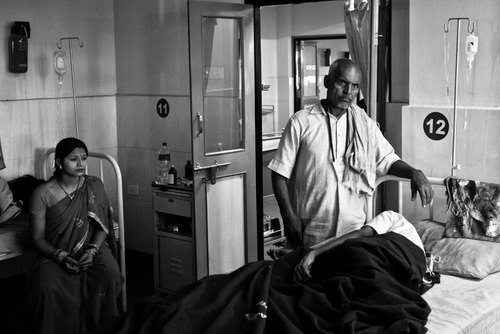Affordable healthcare centres anounced for poor in T-IV cities in Bengal
UNI Feb 21, 2018
Agile Healthcare & Rehabilitation Services (AHRS), promoted by a group of UK-Based doctors of Indian origin has entered in to a strategic collaboration with Kolkata-head quartered Glocal Healthcare Services to offer Telemedicine based primary healthcare across tier-IV towns in India as also market and implement Glocal’s digital dispensaries in the UK.

Agile plans to set up 500 such healthcare centres across Bengal, Bihar, Uttar Pradesh and Madhya Pradesh, places that are really in need of access to doctors and rational Healthcare. Five centres have already been set up and 65 centers have been identified. In the first 6 months 150 centres would be set up and subsequently scaled up. The Agile plan is to make a difference to primary healthcare in India in areas where general practice among physicians is almost non-existent. This has given rise to a greater focus on specialized care that tends to make healthcare unaffordable to the large majority of the population.
In a conclave held in Tuesday here, Dr Vishal Upadhyay, MRCS,FRCS (Tr & Orth) UK, one of the brains behind Agile said that they have identified Glocal to deliver primary healthcare in areas where people are mostly dependent on either government services that are largely ill-equipped and private practice which is expensive. Agile has chosen Glocal as partner because of it’s technological strength which has the capability of a huge outreach and fast and effective delivery of healthcare.
He said that Glocal’s suite of Litmus DX, MX & RX, is a comprehensive mechanism of healthcare delivery mounted on an integrated software platform. It is a combination of acquisition of medical data, analysis, diagnosis and medical advice on a single platform. Dr Upadhyay said Agile will be marketing and implementing the digital dispensaries in
UK where there are lot of patients who need to be brought in to hospital by ambulance for outpatient consultations consuming expensive time and resources of the ambulance service. Also the accident and emergency departments are clogged with patients. In such circumstances, this technology can be dealt with at their home and decisions about
in patient admission made. He said if this can be done, then patients will need to be brought into hospitalonly in cases of emergency thus saving unnecessary use of expensive resources of ambulance services and accident and emergency departments, he said.
-
Exclusive Write-ups & Webinars by KOLs
-
Daily Quiz by specialty
-
Paid Market Research Surveys
-
Case discussions, News & Journals' summaries